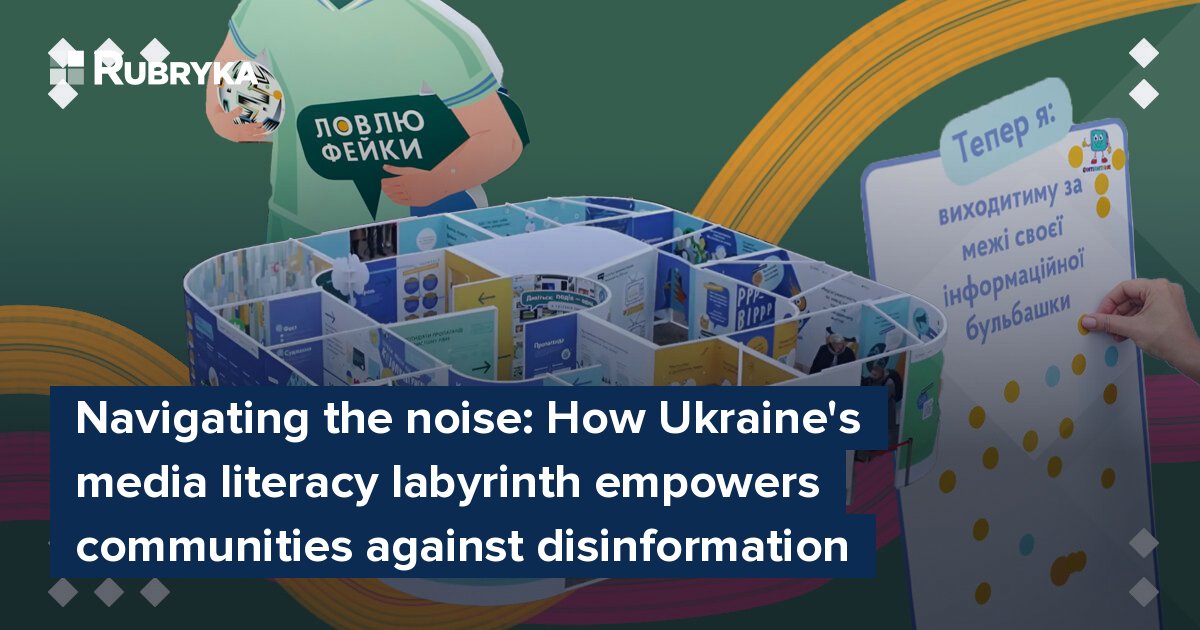
What is the problem?
Every day, the enemy targets not only Ukraine's cities and villages but also floods social networks and Telegram channels with fakes and manipulations. The fight against disinformation—growing harder to detect amidst the surrounding information noise—is a key strategy in the war with Russia. Yet, despite these efforts, some Ukrainians still fall for false information.
What is the solution?
The ability to recognize falsehoods is crucial not only for protecting yourself and your loved ones but also for the future of Ukraine. To aid in developing this skill, the Media Literacy Labyrinth operates in Ukraine. This initiative, part of the USAID Dream and Act program implemented by IREX, travels through communities to teach both children and adults how to defend against information attacks.
Entry to the Media Literacy Labyrinth is free. Rubryka provides insights into the Labyrinth's operations and how it fosters critical thinking and analytical skills.
How does it work?
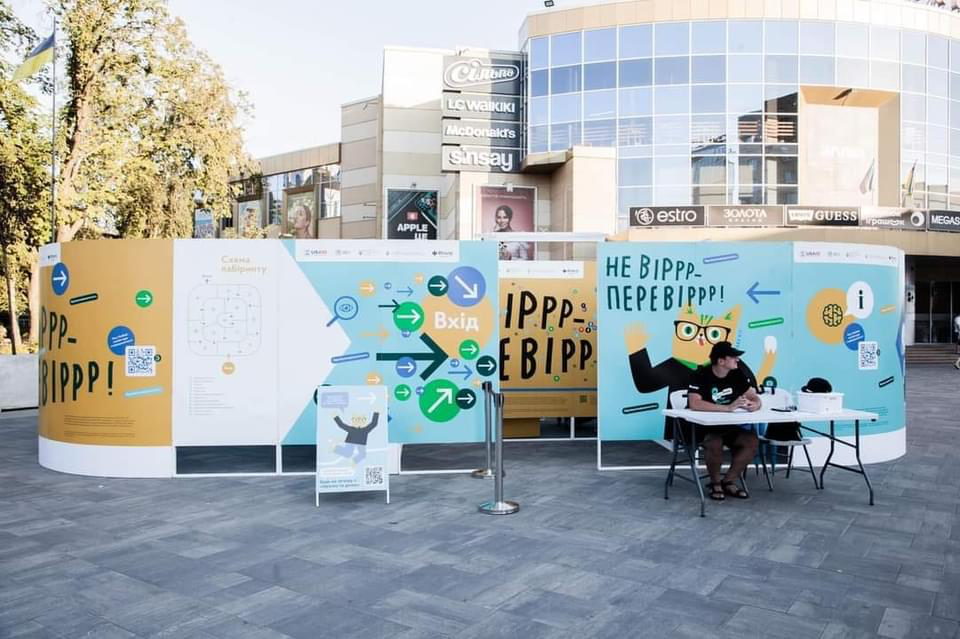
Labyrinth of media literacy in Rivne. Photo from the project archive
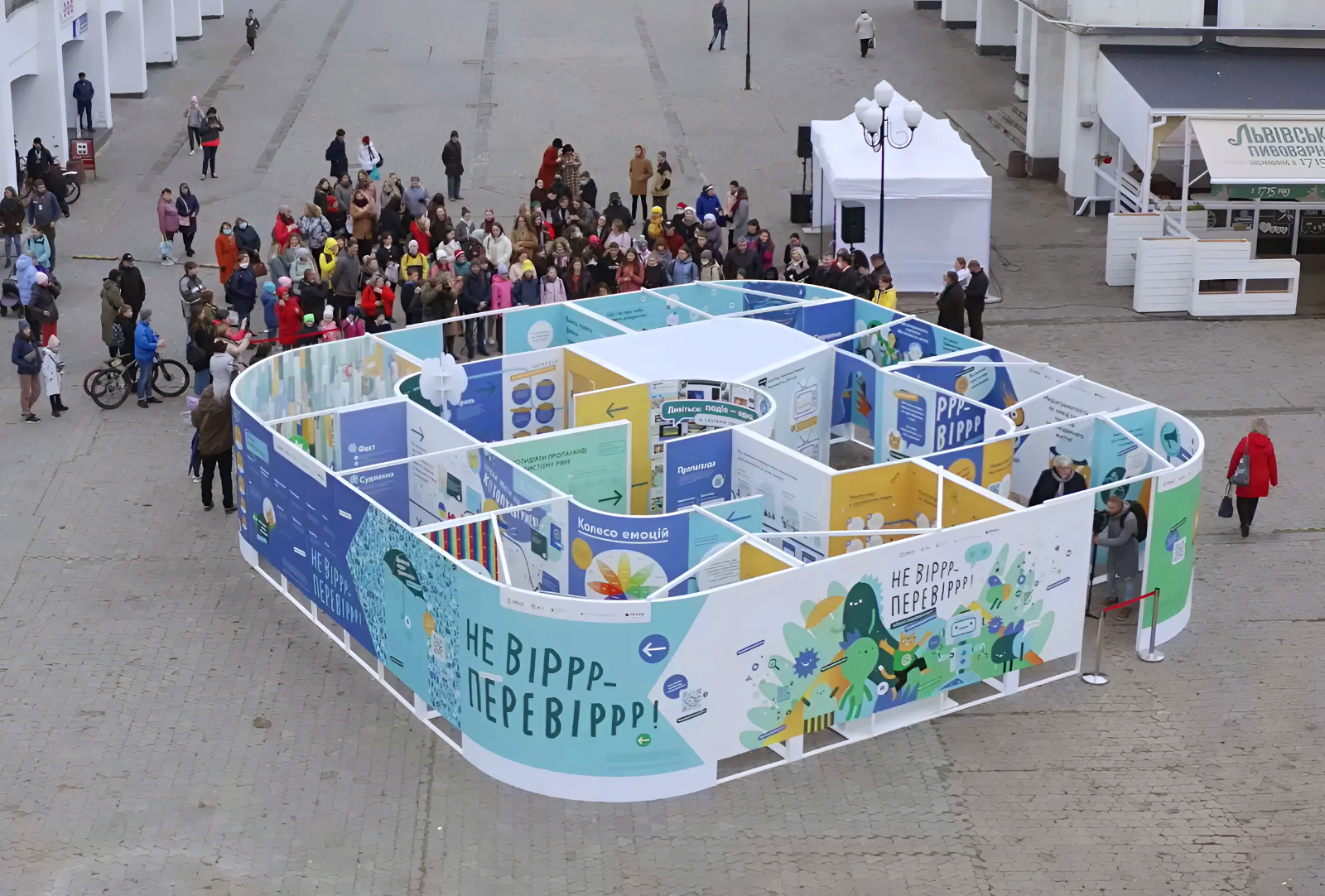
Labyrinth of media literacy in Slavutych. Photo from the project archive
The Labyrinth is the only project of its kind in Ukraine. This mobile structure, comparable in size to a one-story house, features 12 interactive rooms where visitors can gain essential knowledge and skills to enhance their media literacy. Each room offers engaging materials to read, thought-provoking scenarios, and practical tasks designed to test critical thinking and resilience against misinformation.
"The Labyrinth is designed for independent exploration, allowing each visitor to navigate through it without the need for additional support or activities," explains Lyudmyla Krasnytska, head of the social cohesion direction of the USAID "Dream and Act"/IREX program.
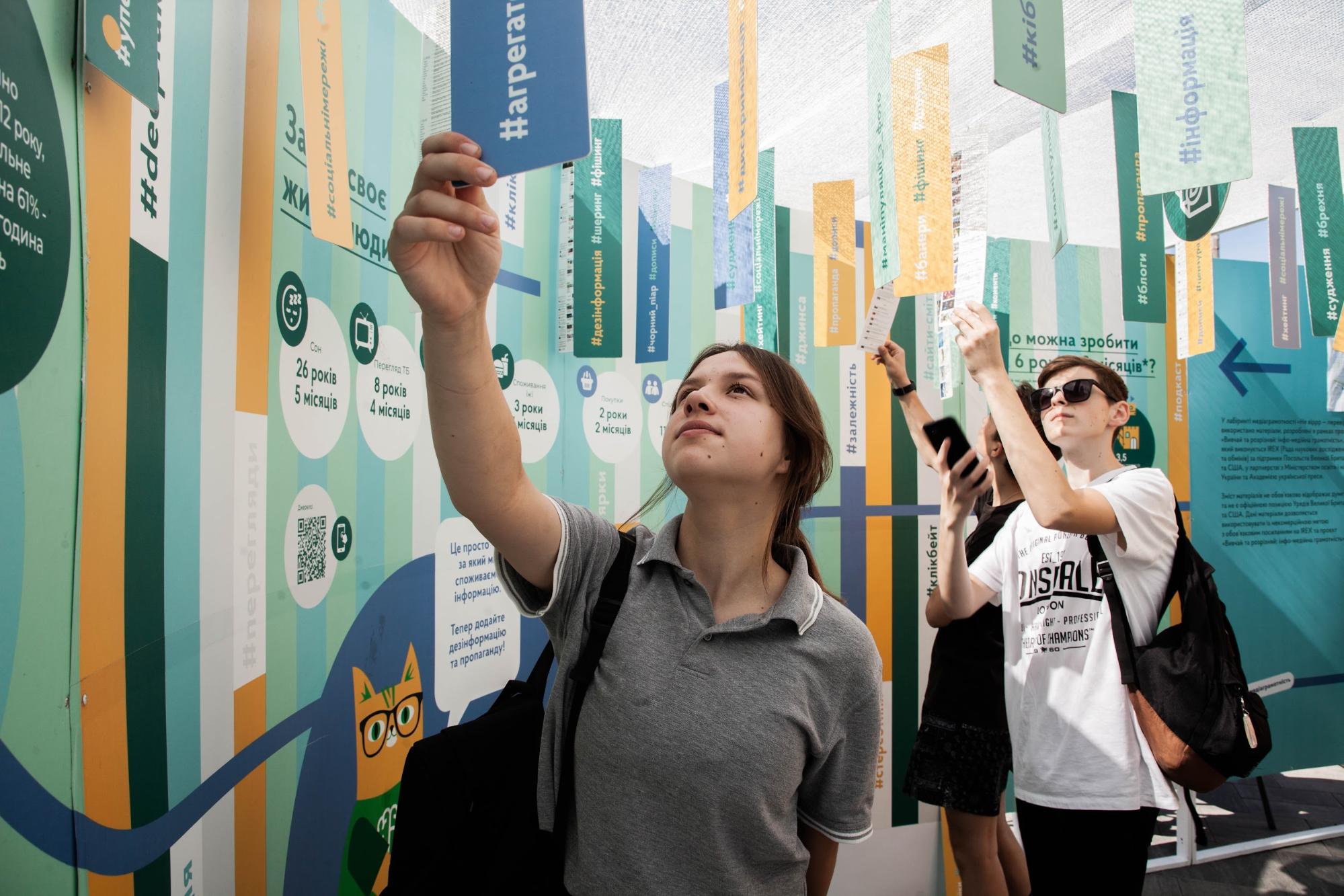
Interactive zone of the Labyrinth of Media Literacy in Rivne. Photo from the project archive
Within the Labyrinth, visitors can explore various aspects of media literacy, including the concept of information noise—the overwhelming flood of information we encounter daily—and strategies for navigating it. Participants will learn to distinguish between facts and opinions, avoid falling for clickbait, and identify populist or manipulative techniques used across media platforms, television, and social networks.
Think you know everything about propaganda? You can put your knowledge to the test in one of the rooms dedicated to this topic. The Labyrinth also provides a step-by-step algorithm for verifying information sources. Attendees will gain skills to recognize and respond to trolls and bots, understand the dangers of stereotypes, learn how social networks operate, and discover life hacks for effectively navigating their algorithms.
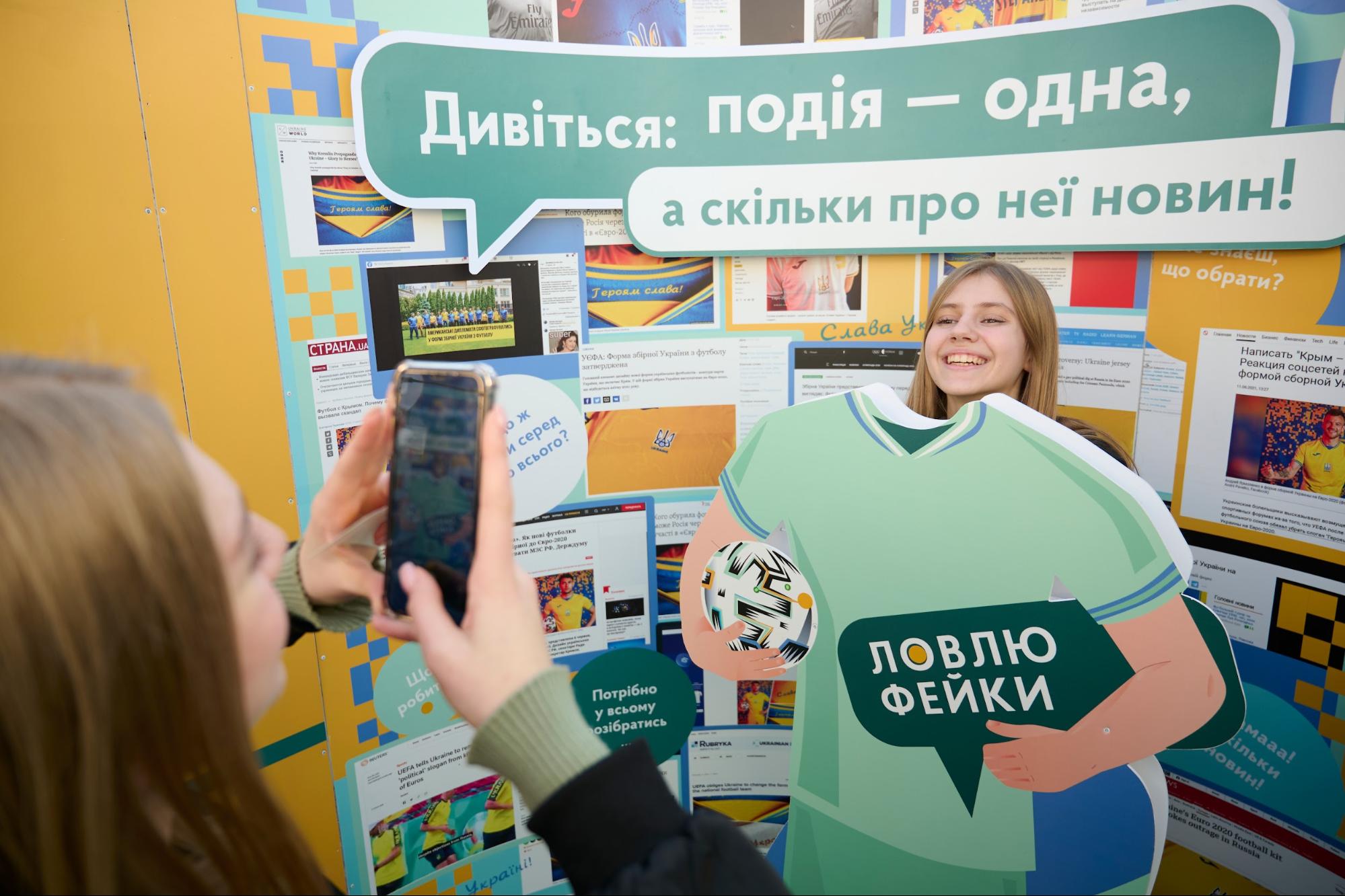
"Catch Fakes" photo zone at the Labyrinth in Kyiv on Kontraktova Square. Photo from the project archive
Most rooms in the Labyrinth feature interactive elements, including thematic photo zones, pathways lined with tapes that simulate the overwhelming flood of information noise, and folders filled with examples of populism that challenge visitors to uncover the motives behind various influences. This engaging format plays a crucial role in attracting children and teenagers, who come seeking adventure and leave with enhanced media literacy skills.
As visitors journey through the Labyrinth, they also discover intriguing facts. For instance, did you know that the average person spends nearly seven years of their life on social media? The organizers have even calculated that during this time, you could walk your dog 93,000 times or climb Mount Everest 32 times!
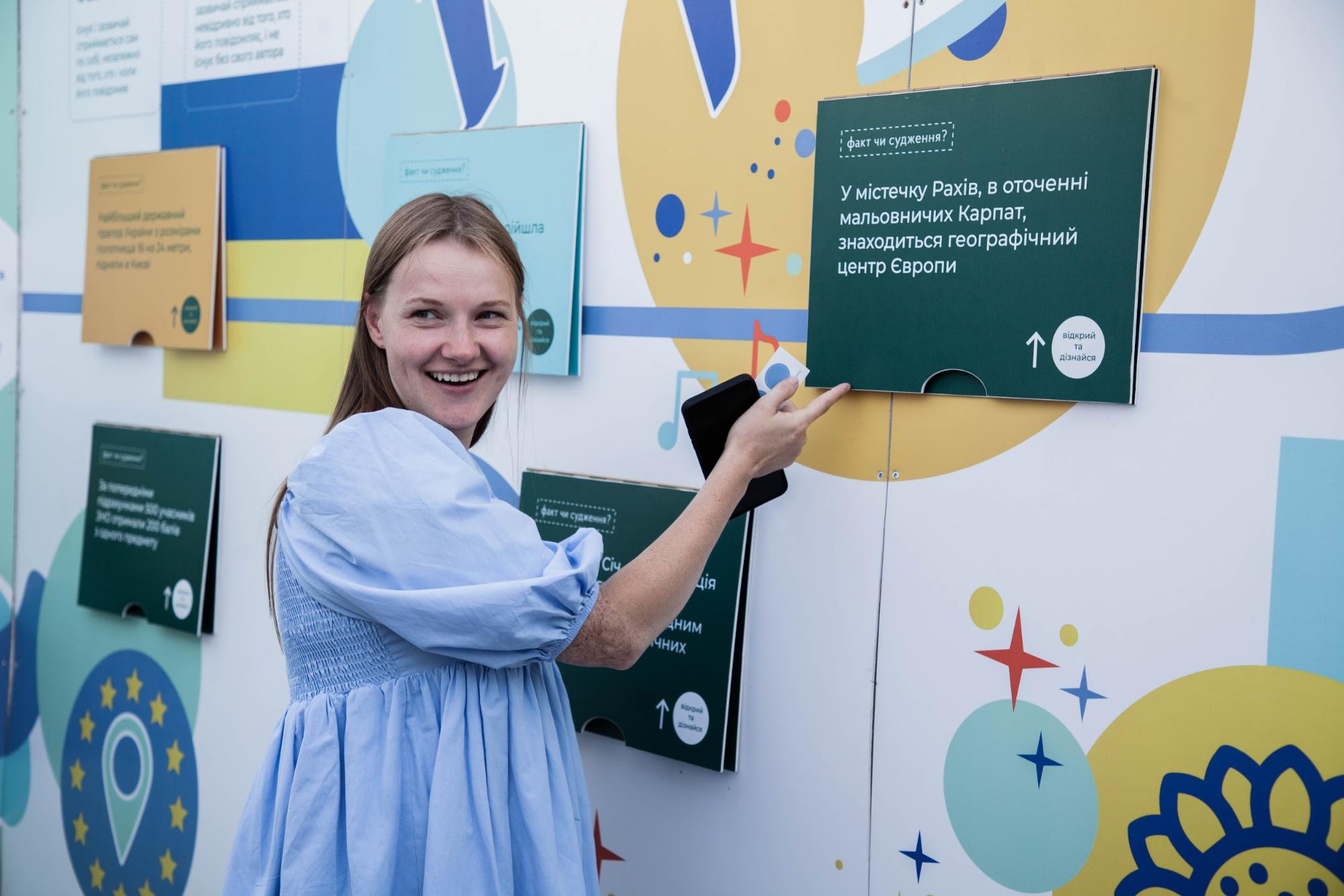
Labyrinth of media literacy in Rivne. Photo from the project archive.
The organizers of the Labyrinth highlight room No. 8, known as the "Information Bubble." This room offers the most comfortable environment within the Labyrinth, as everyone inside shares the same opinions. The tranquility and comfort of this space can make it tempting to stay and avoid the outside world. However, many are unaware that such a "safe" environment is often crafted by social media algorithms, which curate our feeds to align with our existing beliefs. The Labyrinth teaches visitors about the dangers of living in an information bubble and provides strategies for recognizing and escaping it.
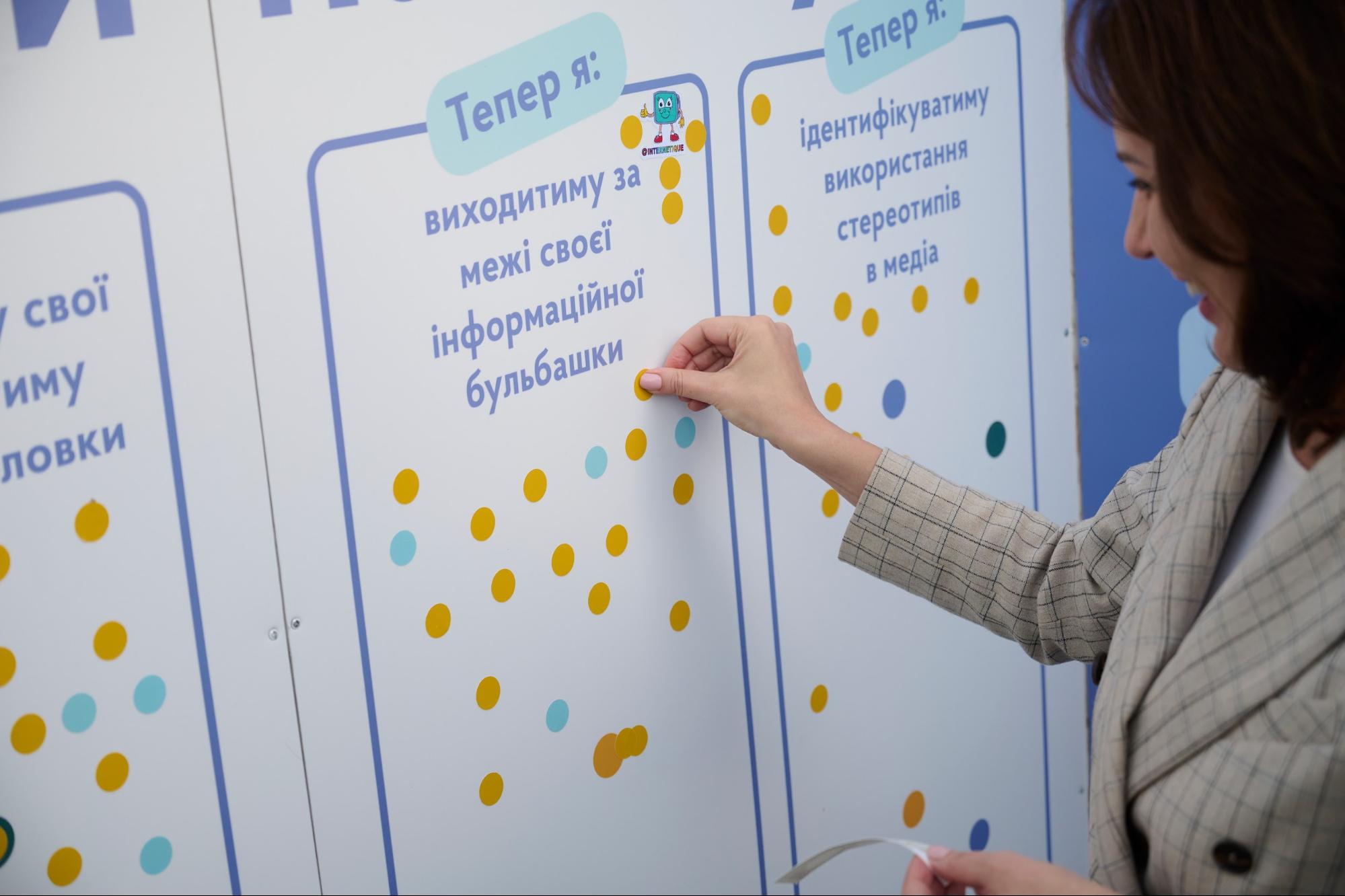
Labyrinth of media literacy in Kyiv. Photo from the project archive
The "Dream and Act" team emphasizes that all forms of manipulation should be regarded with equal seriousness. They argue that whether subtle or overt, manipulation involves using information for deceptive or selfish motives, ultimately leading to negative consequences.
Does it really work?
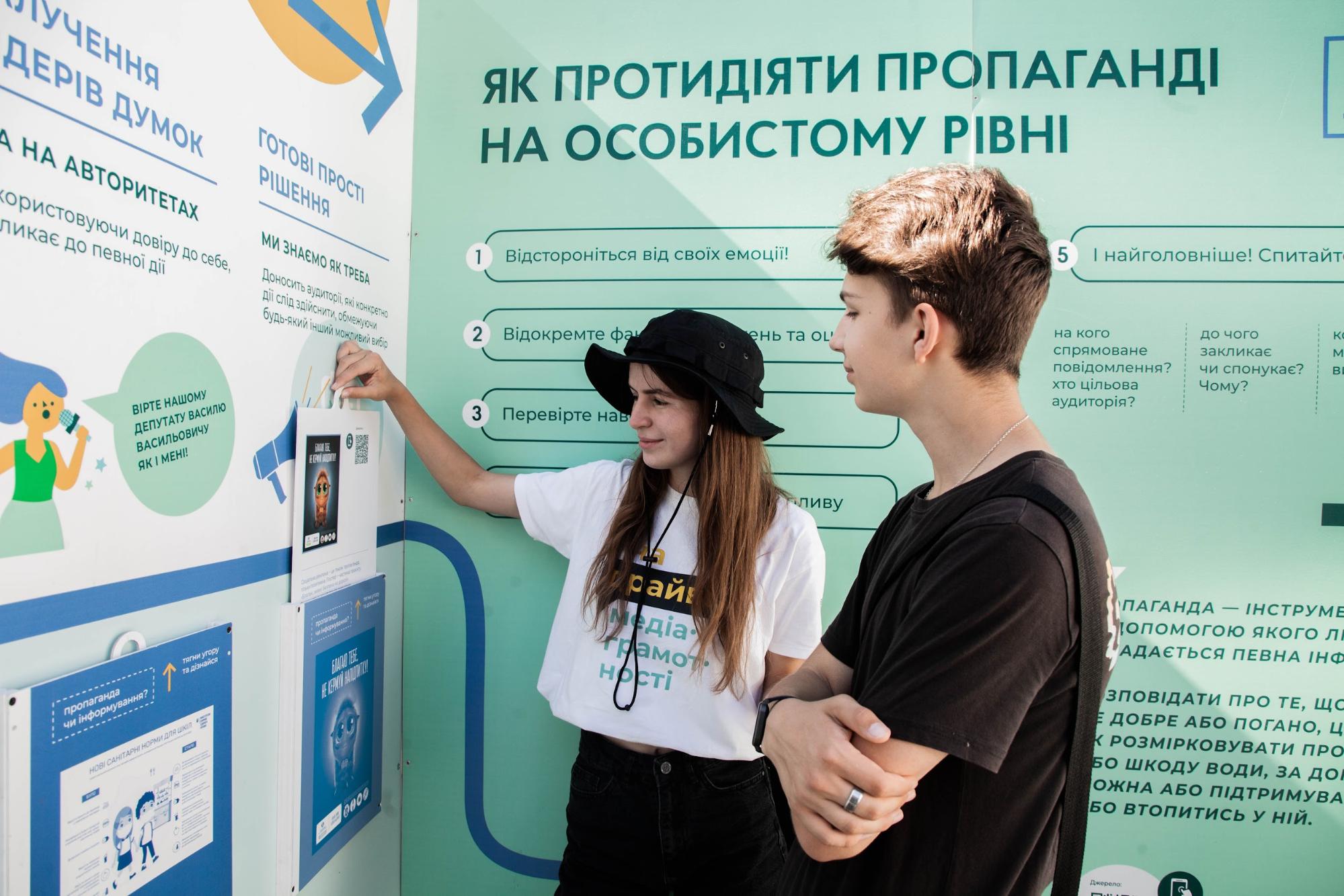
Labyrinth of media literacy in Rivne. Photo from the project archive
Since its launch in 2021, the Labyrinth has traveled across Ukraine, visiting various cities, including Slavutych, Rivne, Ivano-Frankivsk, Zhytomyr, and Sarata—the smallest community in the Odesa region to host the Labyrinth. The educational initiative has made three stops in Kyiv and two in Lviv, attracting nearly 18,000 visitors to date.
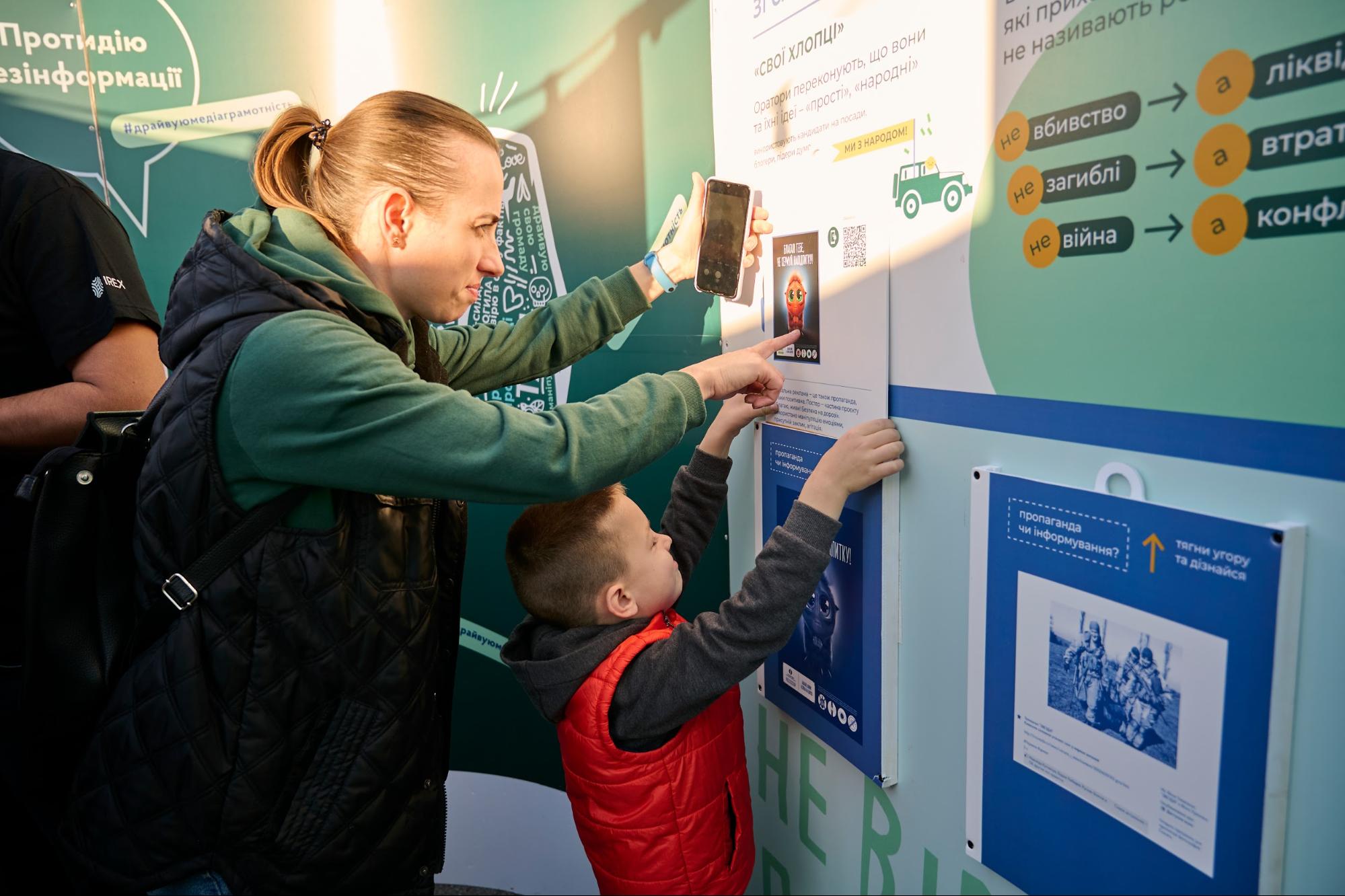
The project primarily targets young people aged 14-35, but the Labyrinth's interactive format and diverse media literacy topics make it engaging for visitors of all age. Photo from the project archive
"When the Labyrinth travels through cities in Ukraine, we often see families visiting with younger children. Parents explain in simple terms why it's essential to verify information and how to avoid manipulation. Meanwhile, the children enjoy interacting with the Labyrinth's elements and admiring the colorful illustrations," shares Krasnytska.
Over its four years of operation, the Labyrinth has consistently received positive feedback from visitors, who appreciate its interactive design. The project's popularity is reflected in the numerous requests from communities eager to host the Labyrinth in their areas.
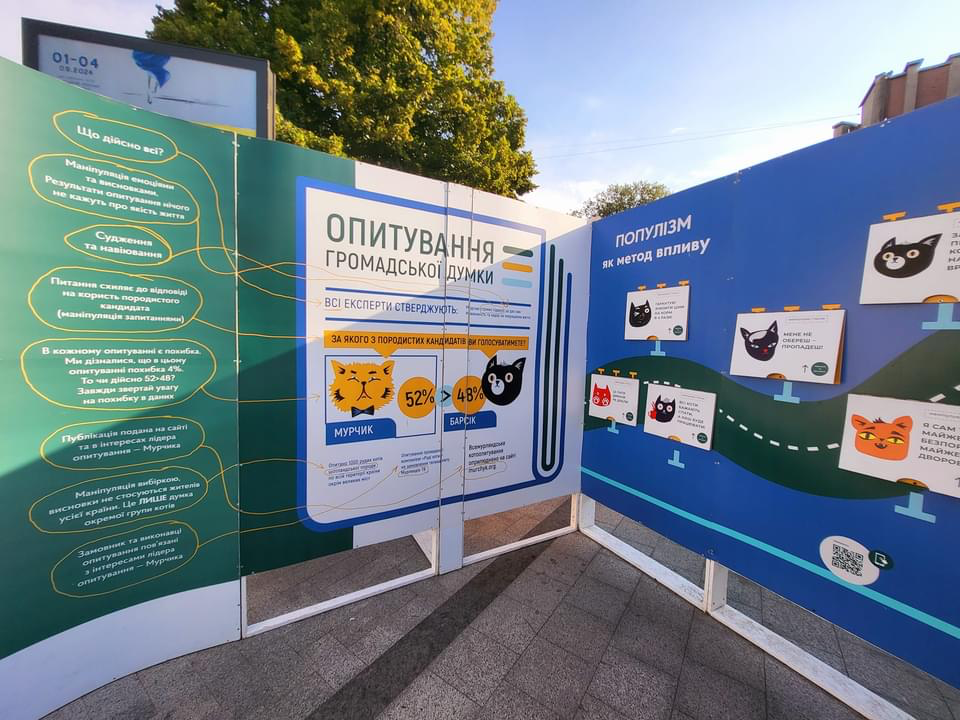
The Labyrinth in Zhytomyr. Photo: Inna Palko
The Labyrinth has been deemed a success, as many visitors report plans to reassess and improve their information consumption habits after experiencing it. "We consider the Labyrinth successful because most visitors who provide feedback say they intend to change how they consume information," says Krasnytska.
While the Labyrinth is not fully inclusive yet, the "Dream and Act" team is working on a digital version to ensure access for those unable to navigate the physical structure. This online version will feature adapted content and maintain the interactive learning format of the offline experience.
Even more useful solutions!
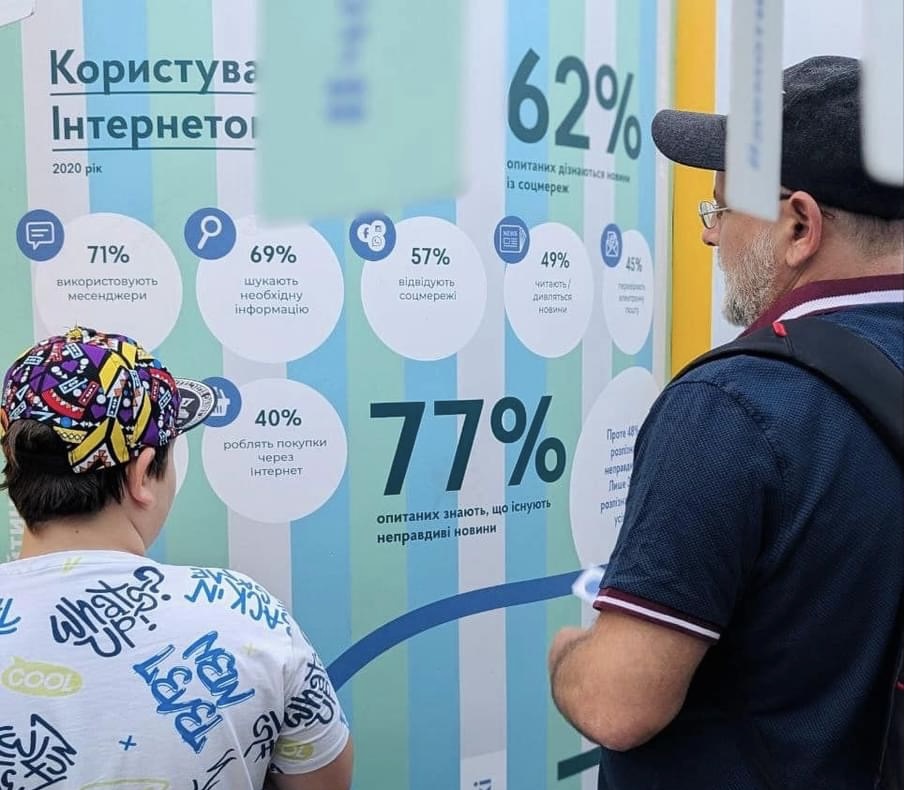
Labyrinth of media literacy in Vinnytsia. Photo from the project archive
For those interested in deepening their understanding of media literacy, "Dream and Act" recommends the IREX online course "Very Verified," created under the "Learn and Discern" program.
"As we navigate this hybrid war, which includes Russian disinformation attacks aimed at undermining our unity, it is crucial to enhance people's ability to critically evaluate the information they encounter. For our team, this initiative transcends education; it is a fight for unity, respect for diversity, and the promotion of democratic values," says Lyudmila Krasnytska.

Cats, dinosaurs, and sad service members: how to spot AI and avoid spreading fakes

Deportation, discredit and hidden agenda of war: how Russian disinformation about EU and Ukraine works

AI-generated images and Ukraine: how emotional images affect the course of war



